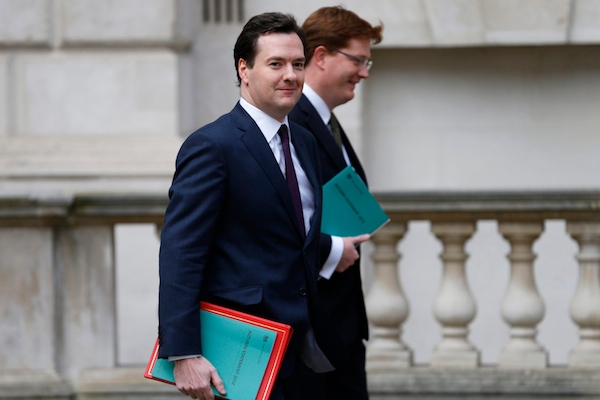Ed Miliband may have coined the term, but it seems George Osborne has the squeezed middle on his mind too. The overall effect of yesterday’s budget* was to take from the rich, take from the poor and give to the middle. The IFS has crunched the numbers and produced the latest in its series of decile charts:
The bottom half of households lose out mainly due to the Chancellor’s decision to increase most working-age benefits by only 1 per cent a year for the next three years, and hence cutting them in real terms.
The rich, meanwhile, have been hit mainly by the cut in the tax-free allowance for pension contributions and the below-inflation 1 per cent increase in the point where the 40p income tax rate kicks in.
It’s those above the middle but not in the top 10 per cent who come out best, benefitting from yesterday’s two big tax cuts: the cancellation of January’s 3p per litre fuel duty rise, and the extra £235 rise in the point at which you start paying income tax.
The IFS has also produced a decile chart for the effects of all the austerity measures introduced since January 2010. The picture is similar: the richest 10 per cent have lost the most, followed by the poorest, while households just above the middle (especially those without kids) and pensioners (ironically, given March’s ‘granny tax’ headlines) have been relatively well-protected.
Of course, this is only the impact of the government’s tax and welfare policies, not how the various groups have been affected by the economy (and other measures such as Quantitative Easing) in recent years.
*It may be called the Autumn Statement, but in the words of IFS director Paul Johnson, ‘We got pretty much the full gamut of tax and spending announcements that you’d expect in a Budget, and some big fiscal and economic news to boot. The idea that there is only one Budget a year has been laid pretty firmly to rest.’








Comments